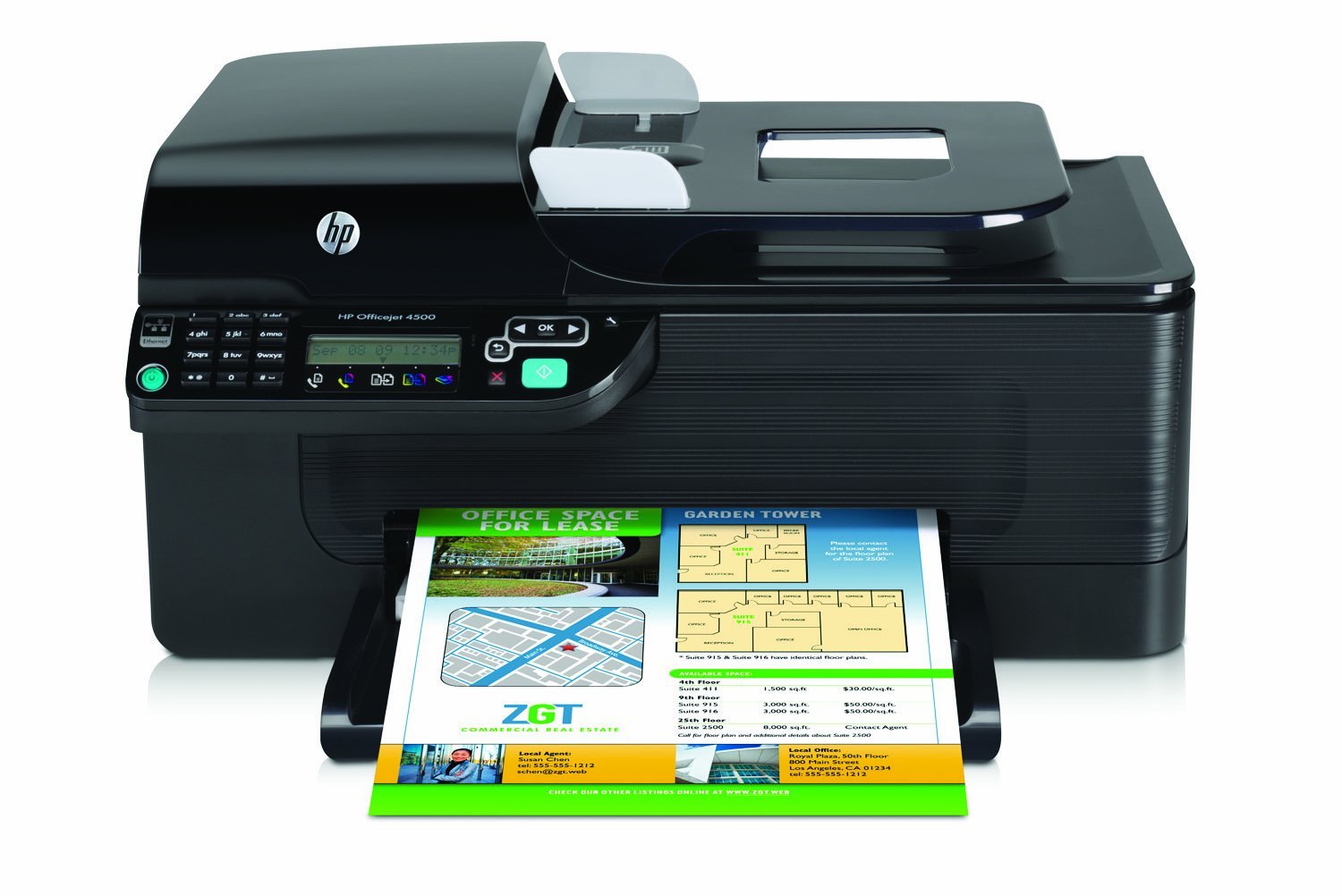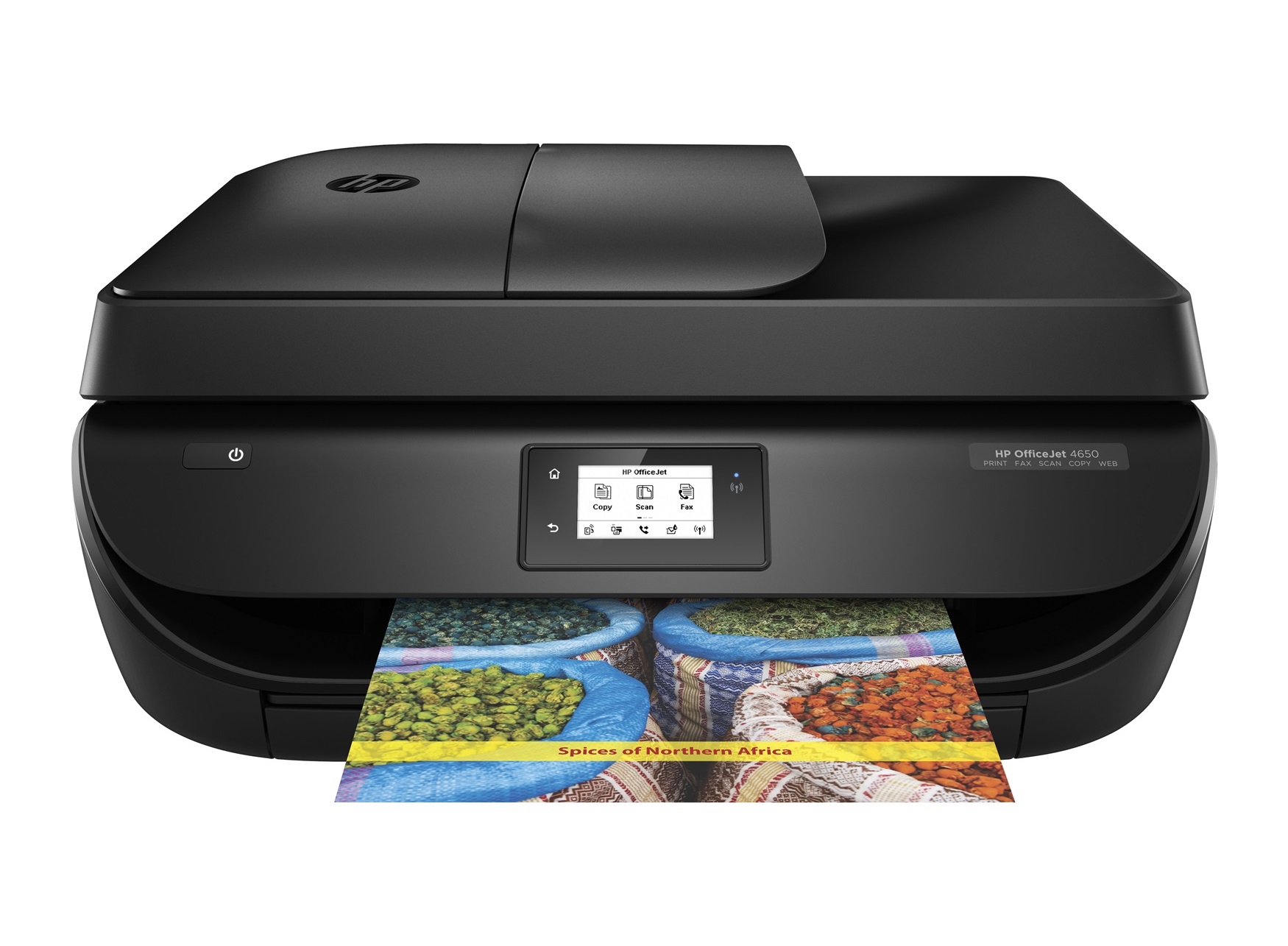It’s 2017, and we still have a printer in the house. Or, rather, a printer/scanner/fax combo, which mostly skulks in a closet and spits out sheets liberally sprayed with horrendously expensive ink, beeping contentedly now and then. We got it back in early October to replace its ailing predecessor, but I’ve been so busy that my notes on the entire affair languished in a dusty corner of my Dropbox until tonight.
Our previous printer was an OfficeJet 4500, which started becoming a nuisance due to a mechanical failure that is symptomatic of the way these things are put together–the paper feeding mechanism started having trouble picking up sheets from the tray, and there simply was no way to tweak or replace what appeared to be a worn out rubber roller without disassembling the entire printer (which I attempted to do) and possibly breaking a few more parts of the mechanism in the process (which I didn’t).

The Hunt For The InkJet In October
So I started looking for a replacement, which had to address a fairly well-defined set of requirements:
- It had to be a combo printer/scanner, since every now and then I need to file away and digitize multiple documents (so an automatic document feeder was a plus).
- It had to support AirPrint out of the box, so I could discontinue my ancient hack, which I had recently Dockerized but shouldn’t really be necessary in 2017.
- Given the negligible volume and kind of actual printing we do (we almost never print photos, and it’s mostly the kids who print anything these days), a color inkjet would still be the most economical solution.
- For compatibility reasons (i.e., zero drivers, common protocols) sticking to HP was a given, since direct scanning from macOS Preview and iOS VueScan were two things I did not want to do without.
- Wired Ethernet and fax were desirable, but optional (more on that later).
After a few days of poking at online retailers’ woefully inadequate technical spec sheets and HP’s adequate (but squirrelly and inconsistent) tech support site, I decided to go with the OfficeJet 4650, which is ultimately just as plasticky and crappy and disposable, but hides it well under a contoured shell with a minimal set of ports as well as a black and white touchscreen display that replaces everything else but the power button.
Besides looking much nicer than its predecessor, it is also a tad more practical to deploy, since the power supply is now built-in. In fact, it wouldn’t look half bad sitting on a desk:

The paper feeding mechanism, although just as inscrutable in its depths, manifests itself outwards in two characteristic ways:
- It has a nicer, closed in tray with better guides (which means there’s less hassle feeding A4 and photo paper to it and aligning the sheets).
- Instead of a proper output tray, it has an utterly ridiculous paper holder that rotates out automatically to hold sheets as they come out of the printer, which I expect my kids to break my day now.
This latter mechanism seems to be a staple of HP’s current inkjet range, so there was no way to avoid it. Time will tell if it lasts.
One requirement that the 4650 didn’t comply with is wired Ethernet. It doesn’t have an Ethernet port, but since it’s sitting right underneath one of my AirPort Extreme base stations, Wi-Fi was an adequate compromise. Of course I can also plug it in via USB to one of my Linux boxes if I so choose, although setting up CUPS is not something I would like to keep doing in this day and age.
But one thing it does have is fax.
Fax? Are you from the past?
I’m not, but Portuguese Customs is still in the Middle Ages, so fax comes in handy.
I routinely order stuff from abroad (mostly gadgetry and electronics components), so every couple of months I have to send in proof of purchasing, and for some inane reason it’s impossible to send a PDF or anything above a megabyte or so to Customs via e-mail (either the message is filtered out or they just don’t receive the attachment).
So fax is still a thing, even though the process of getting anything through Customs is now a veritable homage to Rube Goldberg, for what actually happens is this:
- I put together a PDF with an intro sheet, a scan of the Customs notice, and the proof of purchase, and send it to my printer via the network.
- It then dials the fax number via the Thomson router that is plugged in to my fiber connection, in a woefully wasteful digital/analog/digital conversion whose only saving grace is that, in a way, machines are singing to one another as the PDF is rasterized into rows of dithered pixels.
- Someplace in my telco’s IMS network, an SBC kicks the digital audio stream into an outbound MSC, which then rings up the Customs fax service and adds another leg of digital/analog/digital conversion.
- Hopefully, the Customs office then has the fax routed internally via some sort of fax-to-email gateway, but I would not be surprised if large rolls of fax paper and gnomes were involved.
All things considered, at least I don’t have to put up with T.38 anymore. Had enough of that when we were trying to shove fax over 3G…
AirPrint Woes
Although scanning worked perfectly (especially in VueScan, which I can never say enough nice things about), AirPrint didn’t (and occasionally still doesn’t), since it too ran afoul of the wave of subtle breakage of Apple’s new OS releases.
I’ve had a number of irritating problems with the printer in both macOS High Sierra and iOS 11, which I initially attributed to HP’s shipping the printer with a self-signed certificate–this because I could not get it to work with macOS as “Secure AirPrint” (picking the insecure connection worked) and because I often could not load the printer status page on iOS after it redirected to HTTPS, which happened seemingly at random across multiple devices, but which also coincided with our not being able to print from those devices (iOS 11 would either be stuck on “contacting printer” or Print Center would just go away, merrily tossing the print job into the void).
I eventually “fixed” it by resetting the printer to factory defaults and disabling IPv6, after which I could both access the printer via HTTPS and print from my iPad. Even so, now and then things mysteriously fail to work for a minute or so, so this is sure to be a source of continued annoyance.
But overall it works fine, and the expense sheets and other trivia I print out are crisp and clear (even in draft mode). It does the job quietly, without any fuss and speedily enough, and I guess that is the best one can say about a printer in 2017.